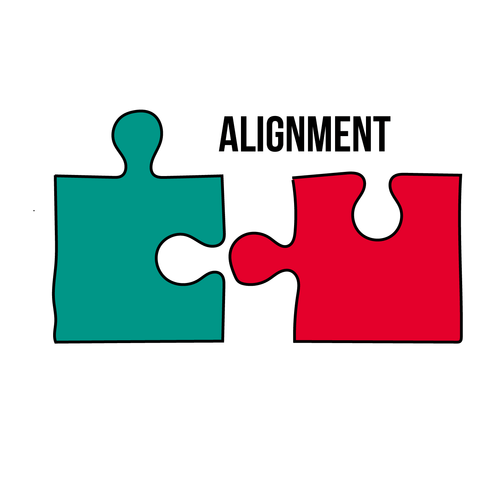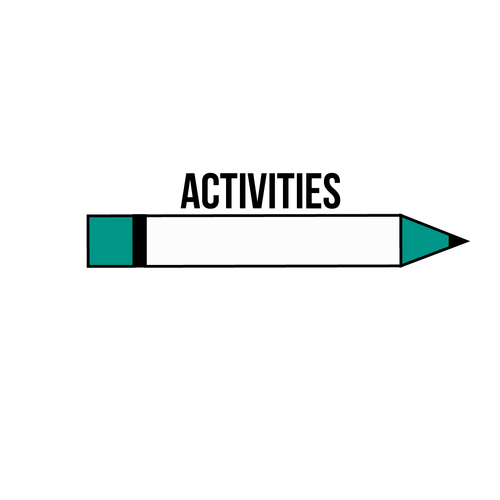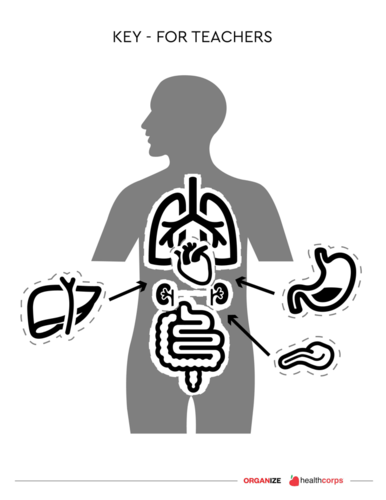7.1: Give the Gift of Life
- Page ID
- 2419
\( \newcommand{\vecs}[1]{\overset { \scriptstyle \rightharpoonup} {\mathbf{#1}} } \)
\( \newcommand{\vecd}[1]{\overset{-\!-\!\rightharpoonup}{\vphantom{a}\smash {#1}}} \)
\( \newcommand{\id}{\mathrm{id}}\) \( \newcommand{\Span}{\mathrm{span}}\)
( \newcommand{\kernel}{\mathrm{null}\,}\) \( \newcommand{\range}{\mathrm{range}\,}\)
\( \newcommand{\RealPart}{\mathrm{Re}}\) \( \newcommand{\ImaginaryPart}{\mathrm{Im}}\)
\( \newcommand{\Argument}{\mathrm{Arg}}\) \( \newcommand{\norm}[1]{\| #1 \|}\)
\( \newcommand{\inner}[2]{\langle #1, #2 \rangle}\)
\( \newcommand{\Span}{\mathrm{span}}\)
\( \newcommand{\id}{\mathrm{id}}\)
\( \newcommand{\Span}{\mathrm{span}}\)
\( \newcommand{\kernel}{\mathrm{null}\,}\)
\( \newcommand{\range}{\mathrm{range}\,}\)
\( \newcommand{\RealPart}{\mathrm{Re}}\)
\( \newcommand{\ImaginaryPart}{\mathrm{Im}}\)
\( \newcommand{\Argument}{\mathrm{Arg}}\)
\( \newcommand{\norm}[1]{\| #1 \|}\)
\( \newcommand{\inner}[2]{\langle #1, #2 \rangle}\)
\( \newcommand{\Span}{\mathrm{span}}\) \( \newcommand{\AA}{\unicode[.8,0]{x212B}}\)
\( \newcommand{\vectorA}[1]{\vec{#1}} % arrow\)
\( \newcommand{\vectorAt}[1]{\vec{\text{#1}}} % arrow\)
\( \newcommand{\vectorB}[1]{\overset { \scriptstyle \rightharpoonup} {\mathbf{#1}} } \)
\( \newcommand{\vectorC}[1]{\textbf{#1}} \)
\( \newcommand{\vectorD}[1]{\overrightarrow{#1}} \)
\( \newcommand{\vectorDt}[1]{\overrightarrow{\text{#1}}} \)
\( \newcommand{\vectE}[1]{\overset{-\!-\!\rightharpoonup}{\vphantom{a}\smash{\mathbf {#1}}}} \)
\( \newcommand{\vecs}[1]{\overset { \scriptstyle \rightharpoonup} {\mathbf{#1}} } \)
\( \newcommand{\vecd}[1]{\overset{-\!-\!\rightharpoonup}{\vphantom{a}\smash {#1}}} \)
\(\newcommand{\avec}{\mathbf a}\) \(\newcommand{\bvec}{\mathbf b}\) \(\newcommand{\cvec}{\mathbf c}\) \(\newcommand{\dvec}{\mathbf d}\) \(\newcommand{\dtil}{\widetilde{\mathbf d}}\) \(\newcommand{\evec}{\mathbf e}\) \(\newcommand{\fvec}{\mathbf f}\) \(\newcommand{\nvec}{\mathbf n}\) \(\newcommand{\pvec}{\mathbf p}\) \(\newcommand{\qvec}{\mathbf q}\) \(\newcommand{\svec}{\mathbf s}\) \(\newcommand{\tvec}{\mathbf t}\) \(\newcommand{\uvec}{\mathbf u}\) \(\newcommand{\vvec}{\mathbf v}\) \(\newcommand{\wvec}{\mathbf w}\) \(\newcommand{\xvec}{\mathbf x}\) \(\newcommand{\yvec}{\mathbf y}\) \(\newcommand{\zvec}{\mathbf z}\) \(\newcommand{\rvec}{\mathbf r}\) \(\newcommand{\mvec}{\mathbf m}\) \(\newcommand{\zerovec}{\mathbf 0}\) \(\newcommand{\onevec}{\mathbf 1}\) \(\newcommand{\real}{\mathbb R}\) \(\newcommand{\twovec}[2]{\left[\begin{array}{r}#1 \\ #2 \end{array}\right]}\) \(\newcommand{\ctwovec}[2]{\left[\begin{array}{c}#1 \\ #2 \end{array}\right]}\) \(\newcommand{\threevec}[3]{\left[\begin{array}{r}#1 \\ #2 \\ #3 \end{array}\right]}\) \(\newcommand{\cthreevec}[3]{\left[\begin{array}{c}#1 \\ #2 \\ #3 \end{array}\right]}\) \(\newcommand{\fourvec}[4]{\left[\begin{array}{r}#1 \\ #2 \\ #3 \\ #4 \end{array}\right]}\) \(\newcommand{\cfourvec}[4]{\left[\begin{array}{c}#1 \\ #2 \\ #3 \\ #4 \end{array}\right]}\) \(\newcommand{\fivevec}[5]{\left[\begin{array}{r}#1 \\ #2 \\ #3 \\ #4 \\ #5 \\ \end{array}\right]}\) \(\newcommand{\cfivevec}[5]{\left[\begin{array}{c}#1 \\ #2 \\ #3 \\ #4 \\ #5 \\ \end{array}\right]}\) \(\newcommand{\mattwo}[4]{\left[\begin{array}{rr}#1 \amp #2 \\ #3 \amp #4 \\ \end{array}\right]}\) \(\newcommand{\laspan}[1]{\text{Span}\{#1\}}\) \(\newcommand{\bcal}{\cal B}\) \(\newcommand{\ccal}{\cal C}\) \(\newcommand{\scal}{\cal S}\) \(\newcommand{\wcal}{\cal W}\) \(\newcommand{\ecal}{\cal E}\) \(\newcommand{\coords}[2]{\left\{#1\right\}_{#2}}\) \(\newcommand{\gray}[1]{\color{gray}{#1}}\) \(\newcommand{\lgray}[1]{\color{lightgray}{#1}}\) \(\newcommand{\rank}{\operatorname{rank}}\) \(\newcommand{\row}{\text{Row}}\) \(\newcommand{\col}{\text{Col}}\) \(\renewcommand{\row}{\text{Row}}\) \(\newcommand{\nul}{\text{Nul}}\) \(\newcommand{\var}{\text{Var}}\) \(\newcommand{\corr}{\text{corr}}\) \(\newcommand{\len}[1]{\left|#1\right|}\) \(\newcommand{\bbar}{\overline{\bvec}}\) \(\newcommand{\bhat}{\widehat{\bvec}}\) \(\newcommand{\bperp}{\bvec^\perp}\) \(\newcommand{\xhat}{\widehat{\xvec}}\) \(\newcommand{\vhat}{\widehat{\vvec}}\) \(\newcommand{\uhat}{\widehat{\uvec}}\) \(\newcommand{\what}{\widehat{\wvec}}\) \(\newcommand{\Sighat}{\widehat{\Sigma}}\) \(\newcommand{\lt}{<}\) \(\newcommand{\gt}{>}\) \(\newcommand{\amp}{&}\) \(\definecolor{fillinmathshade}{gray}{0.9}\)
National Health Education Standards (NHES)
- 1.12.1 Predict how healthy practices, such as organ donation and transplantation, can affect health status.
- 7.12.2 Demonstrate a variety of healthy practices and behaviors, such as organ donation and transplantation, that will maintain or improve the health of self and others.
SMART Goal
- Instruction: In a group or think-pair-share format, have participants discuss the following questions. Acknowledge those who have progressed toward their goal(s) and encourage anyone who wants to change or modify their goal to get 1:1 support.
- Share: Let’s discuss our SMART Goals.
-
- How is it going with your current SMART goal?
- What are some ways you can improve progress towards your goal? (Grows)
- What are some ways you are doing well with progress towards your goal? (Glows)

- How organ donation benefits the recipient(s) of a transplant, what causes someone to need an organ transplant, and how they may receive one.

- Worksheets
- Slide presentation
- Organ Cutouts Handout
- Human Torso Worksheet
- Objects to represent kidneys (i.e. erasers)
- Markers and paper

- Organ: A part of the body (such as the heart or liver) that has a particular function (Merriam-Webster Learner’s Dictionary, n.d.).
- Organ Transplantation: The process of surgically transferring a donated organ to someone diagnosed with organ failure (Organdonor.gov, n.d.).
- Organ Donation: The process of providing an organ, organs, or partial organ to transplant into one or more people. Organ donors can be deceased or living (Organdonor.gov, n.d.).
- Kidney: An organ that removes waste products from your blood and makes urine (Merriam-Webster Learner’s Dictionary, n.d.).
- Transplant Waiting List: The list of candidates registered to receive a human cell, tissue, and organ transplant (Columbia University Department of Surgery, n.d.).

- Do Now
- All About Organs
- Kidney Swap
- Share and Make Aware
- Exit Ticket

Do Now: Donation to Transplantation
- Instruction: Have participants write on their worksheet or share out loud the following question(s):
-
- What is an organ? A part of the body (such as the heart or liver) that has a particular function (Merriam-Webster Learner’s Dictionary, n.d.).
- What is an organ transplantation? The process of surgically transferring a donated organ to someone diagnosed with organ failure. Someone may need a transplant for a variety of reasons. Some of these reasons have primarily environmental causes (e.g. alcoholic liver disease leading to cirrhosis) while others are genetic (e.g. cystic fibrosis) (Organdonor.gov, n.d.).
- What is an organ donation? The process of providing an organ, organs, or partial organ to transplant into one or more people. Organ donors can be deceased or living (Organdonor.gov, n.d.).
- Share: Without organ donors, organ transplantation would not be possible. Let’s learn about how organs have saved lives.
- Instruction: If you are in a media-available classroom, show participants this video: youtu.be/ExPIEn10Wn8
- Video Summary: Learn about how 6-year-old Caitlin’s life was saved by an organ donor.
- If you are in a media-unavailable classroom, select 1-2 articles from https://organdonor.gov/statistics-stories/donation-stories.html to read to your group.
Good to Know: All About Organs
- Set Up: Cut out the organs from Organ Cutouts Handout.
- Instruction: Ask participants to raise their hands and name a transplantable organ. If they name one correctly, hand them a cutout of the organs with tape on the back. Ask the participant to put the organ in the correct place on an outline of the human torso, which can be obtained from the Human Torso Handout (printed onto a poster or drawn/projected onto a board). There are other organs besides those pictured, but we are concerned with transplantable organs in this activity.
- Note: Although the stomach is depicted here, it actually is not one of the widely recognized “transplantable” organs. This is because someone can technically live without their stomach.

- Instruction: Once the organ has been properly placed, ask other participants what that organ does and why it might fail and need to be replaced. Assist participants in recording the correct answers on their worksheet.
| Organ | Function | Why Might It Need to be Replaced |
| Heart |
Pumps blood, providing the body with oxygen and nutrients and carrying away waste |
|
| Liver |
Cleans blood of toxins, aids in digesting fats, and stores energy |
|
| Lungs |
Inhale and exhale air |
|
| Pancreas |
Produces enzymes that help with digestion and control the level of glucose (a type of sugar) in the blood |
|
| Kidneys |
Filter waste out of blood, make urine (pee), and balance the volume of fluids in the body |
|
| Intestine |
Absorbs nutrients from food |
|
- Share: Organ transplantation is the process of surgically transferring a donated organ to someone diagnosed with organ failure. Someone may need a transplant for a variety of reasons. Some of these reasons have primarily environmental causes (e.g. alcoholic liver disease leading to cirrhosis) while others are genetic (e.g. cystic fibrosis) (Organdonor.gov, n.d.). If someone in need of a transplant does not get an organ, they may die. Therefore, there is a transplant waiting list, or a national database of patients registered and waiting to receive a human cell, tissue and organ transplant (Columbia University Department of Surgery, n.d.). This list is managed by the Organ Procurement and Transplantation Network, which has policies to determine how donor organs are matched and given to patients on the waiting list. Currently, there are about 120,000 Americans waiting for a lifesaving transplant, and roughly 20 people die each day waiting for a transplant (OPTN, 2017). That’s why organ donation is so important. Organ donors can be dead or alive. Notably, a single deceased donor can save up to 8 lives because there are 8 possible organs that can be donated: the liver, lungs (2 lungs), heart, kidneys, pancreas, and small intestine (Organdonor.gov, n.d.). All adults in the U.S. can donate. In some states, even people under the age of 18 can commit to organ donation as well. Importantly, you can sign up for organ donation even if you have a medical condition. The transplant team will determine whether the donation is possible when the time comes. Also, there is a myth that your family must pay for donation. However, there is no cost to donors or their families for organ donation.
- Share: It is now easier to register as an organ donor than ever before. Historically, the only place to register as an organ donor was at the DMV when obtaining a driver’s license. You can still register this way, but it is an outdated system and your registration may not be found in every state. Instead, you can now register in any state via RegisterMe.org or Organize.org.
- Share: Deciding to be a living donor versus a deceased donor requires two different pathways of thought, and we recommend that you discuss the latter. Although it may be difficult to talk about matters surrounding death, here are a few questions that may help guide this discussion with your families:
-
- What do you and your parents understand about organ donation?
- Do you want to be an organ donor? Why or why not?
- Do your parents/guardians want you to be an organ donor? Why or why not?
- What are your ideas about the responsibility humans have to help one another?
- What is the value of a human body after the person has passed away?
- What would you and your family like to leave behind once you have passed away?
- Share: Although this conversation may be difficult to initiate, if something were to happen to you, it can bring a great deal of comfort and peace when family members have discussed their wishes with one another in advance. Importantly, it is not the responsibility of the potential donor (students or parents) to decide whether they are in “good enough shape” to donate their organs. The decision to register is simply an indicator to healthcare professionals (which do not include your own attending physician) that you would be willing to donate if they were to evaluate your organs as being useful to someone on the waitlist.
Real World Relevance: Kidney Swap
- Share: Most organ donations occur after the donor has died, but sometimes the donation occurs while the donor is alive. In fact, about 4 out of every 10 donations are from living donors - that’s roughly 6,000 donations (Organdonor.gov, n.d.). When one of your family members needs an organ, you may want to consider donating. However, you may not be a match for your family member based on blood type or other factors. Yet, you may be a match for someone else’s family member, and they may be a match for your family member. This is the premise for a paired kidney exchange or “kidney swap” (John Hopkins Medicine, n.d.). What does a kidney do? A kidney is an organ that removes waste products from your blood and makes urine (Merriam-Webster Learner’s Dictionary, n.d.). There are two kidneys in an average human body.
- Instruction: Display image on a projector in the slide presentation.
 Image from: John Hopkins Medicine. (n.d.). Paired kidney swap. Retrieved From: www.hopkinsmedicine.org/tran..._exchange.html
Image from: John Hopkins Medicine. (n.d.). Paired kidney swap. Retrieved From: www.hopkinsmedicine.org/tran..._exchange.html- Share: A kidney chain is the same idea but can affect many more people and begins with an altruistic living donor or someone who is still alive and wants to donate an organ out of the goodness of his or her heart. Let’s see how a kidney chain would work, using our own group to demonstrate.
- Instruction: Ask participants to find a partner. One person will be on the transplant waiting list, and the other will be their family member. Give the family member two objects to represent two functional kidneys. The waitlisted person does not have functional kidneys; they are experiencing kidney failure.
- Remind the participants that they need only one kidney (object) to survive. They may want to give one of their objects to their waitlisted partner, but that person cannot accept any object their partner has touched (their body is incompatible with this kidney).
- If you have an odd number of participants, the remaining person will be the altruistic living donor; otherwise, the facilitator will play this role. The altruistic living donor has two kidneys (objects), but no family member that needs an extra. They still want to help, so they give one object to a random, waitlisted participant. This creates another partner whose family member is no longer in need of a kidney (object). They can do the same for another random person. This process continues until every participant in the class has one object.
- See the diagram below for a visual representation of this activity.

Hands-On: Share and Make Aware
- Share: Now that we have discussed the importance of organ donation, how would you want to share this information with others in your communities? One way is to create a fun poster with a slogan, image, and/or hashtag to share and make aware the importance of organ donation with others in your community.
- Instruction: Split participants into groups of 3-5. Provide groups with markers and paper. After all the groups have finished, have each group present their work to the others.
-
- Optional: Hang these posters around the school/office/community. However, be sure that you get the approval from the appropriate personnel (principal, teacher, boss, etc.) to do so.

Exit Ticket
- Instruction: Have participants write on their worksheet or share out loud the following question(s).
-
- How would you start a conversation about organ donation with your family?
Special thank you to our partners at ORGANIZE for supporting the content of this lesson:
ORGANIZE is a US-based non-profit focused on bringing reform to the organ donation system. ORGANIZE was co-founded by Jenna Arnold and Greg Segal in late 2013 after Segal's father, Rick Segal, was forced to wait five years to undergo a heart transplant. Special thanks to Emily Coker (former Director of Partnerships at ORGANIZE and now a medical student at UCLA David Geffen School of Medicine) for her feedback and contributions to this lesson.
Bibliography
- Columbia University Department of Surgery. (n.d.). Transplant waiting list. Retrieved From: http://columbiasurgery.org/heart-tra...t-waiting-list
- John Hopkins Medicine. (n.d.). Paired kidney swap. Retrieved From: www.hopkinsmedicine.org/transplant/programs/kidney/incompatible/paired_kidney_exchange.html
- John Stilwell. (2014). LifeShare of the Carolinas – Organ Donation Program. Retrieved From: https://www.youtube.com/watch?v=lxQpNhMNPm4
- Organ Procurement and Transplantation Network. (2017). Data. Retrieved From: https://optn.transplant.hrsa.gov/
- McManus, Megan. (2016). It's an Honour to Be the Recipient of a Donor Organ. Australian Women's Weekly. Retrieved From: https://www.nowtolove.com.au/news/latest-news/thank-you-for-my-life-and-thank-you-for-the-opportunity-to-live-13625
- Merriam-Webster Learner’s Dictionary. (n.d.). Dialysis. Retrieved From: http://www.learnersdictionary.com/definition/dialysis
- Merriam-Webster Learner’s Dictionary. (n.d.). Organ. Retrieved From: http://www.learnersdictionary.com/definition/organ
- Merriam-Webster Learner’s Dictionary. (n.d.). Kidney. Retrieved From: http://www.learnersdictionary.com/definition/kidney
- Organdonor.gov. (n.d.). Learn about organ donation. Retrieved From: https://organdonor.gov/about.html

- Facilitator Brief Handout
- TEDx Talks. (2012). Giving the Gift of Life through Organ Donation: Chris Barry. Retrieved From: youtu.be/UigBNjBLByc

